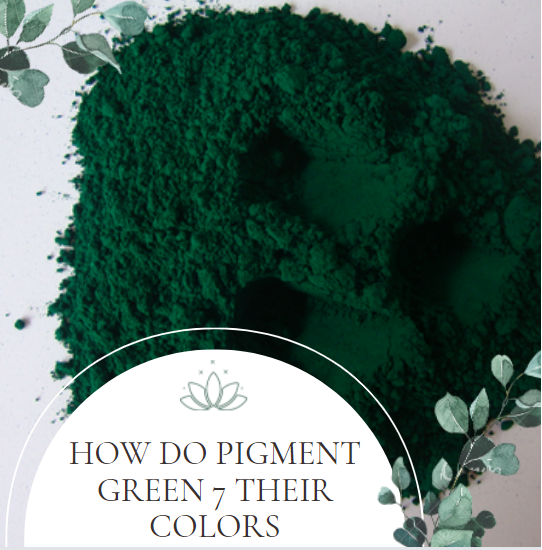What Exactly Is Pigment Green 7?
Have you ever seen the colour green and thought to yourself, I wonder what that is? Well, you might be surprised to find out that the specific shade of green you’re thinking of (if it has a specific shade of green at all) could be coming from Pigment Green 7, or PY 3 (also known as Pigment Green 7). No matter what it’s called, this colourant can be used to add just the right tone of colour to items like cosmetics and household cleaning products.
Why Is There So Much Confusion Over What Pigment Green 7 Is?
Pigment Green 7 has gained much notoriety among health-conscious consumers over recent years because of its green moniker, but it’s important to remember that it comes in a wide variety of forms and is used in many applications. Here’s why: In many industries, pigments are divided into basic groups: organic, inorganic and earth-derived.
Organic pigments are derived from living sources (plants or animals) while inorganic pigments are derived from nonliving sources (e.g., minerals). Earth-derived pigments, however, can be either organic or inorganic — they come from minerals but often require chemical processing to create commercial pigments — which leads to some confusion about pigment This means that Pigment Green 7 isn’t necessarily organic or inorganic; rather, it can be one or both depending on how it was created. It may also contain other chemicals such as calcium carbonate and aluminium hydroxide (in addition to chromium hydroxide green). The reason for so much controversy lies within those chemicals themselves; these substances have been linked to potential health risks if inhaled during manufacturing processes and may irritate when applied topically.
The Four Different Paints.
Four different types of pigments fall under Pigment Green 7, so let’s take a look at what makes each one different. They are Carbon Black, Phthalocyanine Blue (PB15), Aluminium Powder and Manganese Violet (PV19). The first three pigments listed above will be found in most colours of paint, while Manganese Violet will only appear in light green-blue shades. You’ll also find them in coatings, plastics and other colours of pigment. So how do they work exactly? Let’s break it down!
Distinguishing Between Pigments And Dyes.
A pigment is a substance that produces colour when applied to something else. For example, green paint made with pigments of black and yellow will be Pigment Green 7, no matter what it’s painted on. A dye, on the other hand, requires another substance to hold or take up all its extra pigment molecules—most often an inert material like cotton or silk.
If you paint blue dye onto red silk (or any other absorbent material), it will soak up all that excess pigment until it matches its background. Hence why dyed clothing fades in sunlight over time—the dye isn’t doing anything anymore since there’s nothing left for it to bond with and thus protect your clothes from fading. But if you want to get technical, a dye can also refer to any coloured substance used for colouring materials—like hair dyes or food colouring. The bottom line: Dyes are substances that use other substances as their base material; pigments are substances that use themselves as their base material. Got it? Good! Now go have fun with those colours!
They’re Not Dyes, They’re Painting.
Paint, or pigments as they’re known in scientific circles, are usually made from a variety of natural sources including clays, vegetables and minerals. These raw ingredients are mixed with a binding agent to create paint. The most common binding agents include linseed oil, soybean oil and petroleum distillates. Pigments come in two main forms: organic and inorganic.
Organic pigments are derived from living organisms like plants and algae while inorganic pigments are man-made; one of these artificial pigments is Pigment Green 7. Pigment Green 7 isn’t just any old pigment, though. It belongs to a group called manufacturer of pigment green 7 that can be used alone or blended for different colours and effects. There are more than 40 different types of phthalocyanine pigment! But what makes Pigment Green 7 so special? And how does it get its green colour?
